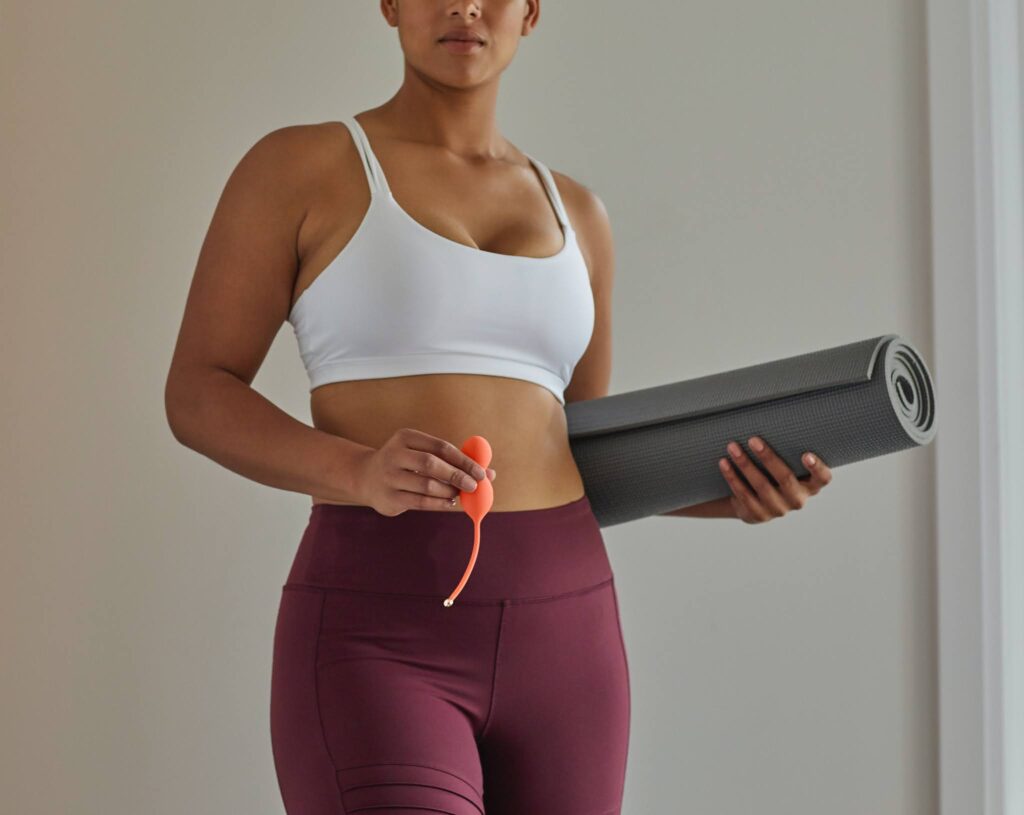After giving birth many women struggle with suddenly having to urinate, not being able to hold the urine until being on the toilet and losing urine while sneezing or coughing, and other ways of urine leakage. This condition called urinary incontinence is very common after child birth and during the third trimester of pregnancy.
In this article I will share about how and why this change in the inability of holding our urine happens and how we can support our body to get back to normal passing of urine.
Pelvic floor muscles
The pelvic floor muscles sit at the bottom of our abdomen. These muscles hold the weight of all our organs like bladder, uterus, rectum and intestines. During pregnancy they also carry the weight of the baby.
The pelvic floor muscles sit between a diamond shape of bones made up of our pubic bone in the front, our tailbone (coccyx) at our back (end of our spine), and our sit bone (ischial tuberosity) on either side.
Within this diamond shape of bones are layers of muscles that make out the pelvic floor muscles. They have a hammock-like shape and surround the anus, vagina and urethra.
The function of the pelvic floor muscles is to:
- Support and stabilise the pelvic organs (bladder, uterus and rectum)
- Control the opening and closing of bladder and rectum
- Contribute to sexual arousal and sensation through voluntary contractions
- Support the baby during pregnancy and help the baby navigate through the pelvis during birth
Changes during pregnancy and birth

- Vaginal delivery
- Forceps or vacuum assisted delivery
- Episiotomy, a cut of the muscle between anus and vagina, or a muscle tear during delivery
- Age – above 35 the risk increases
- Overweight or retained pregnancy weight after birth
- Smoking
Exercises for pelvic floor muscles
There are different things we can do to train our pelvic floor muscles. The most commonly known one is called Kegel-exercise. This is an exercise that involves tightening and releasing of the pelvic floor muscles.
Another option to train these muscles is to use external tools, like vaginal cones and Kegel-balls that are inserted into the vagina and then used to contract and release the surrounding muscles. However right after birth these tools are not recommended since the whole area around the pelvis is still sore.
In case the nerves of these muscles have been damaged during delivery, there is an option of doing electrical stimulation. This is a passive tool that stimulates the muscles to contract and can help regrow nerve cells in this area.
Here are some exercises you can do if you are suffering from incontinence.
Kegel exercises
1. Basic exercise
- Lie down on your back with your knees bent and your feet touching the ground.
- Breath in deeply through your nose so your ribs expand. Try and breath only into the area below your breasts. Try not to breath into the belly or too far up into the shoulders (position 1).
- As you exhale, pull your perineum (the muscle between your vagina and anus) inwards towards your belly and pull your navel and lower belly inwards towards your spine (position 2).
- During the next inhalation relax your perineum and abdominal muscles.
- Repeat this exercise 10 times.


2. Marching Exercise
- Lie down on your back with your knees bent and your toes touching the ground and heels raised.
- Breath in deeply through your nose so your ribs expand. Try and breath only into the area below your breasts. Try not to breath into the belly or too far up into the shoulders (position 1).
- As you exhale, pull your perineum (the muscle between your vagina and anus) inwards towards your belly and pull your navel and lower belly inwards towards your spine. Lift one leg slightly up as if you are marching (position 2).
- During the next inhalation (step 2) relax your perineum, abdominal muscles and lower your leg.
- During the next exhalation (step 3) lift your other leg.
- Continue relaxing everything while inhaling and contracting while exhaling, switching legs each round.
- Repeat this exercise 10 times.


3. Rowing Exercise
- Sit down on your heels, or sit on a chair and stretch out your arms straight with your hands flat (position 1).
- Breath in deeply through your nose so your ribs expand. Try and breath only into the area below your breasts. Try not to breath into the belly or too far up into the shoulders.
- As you exhale, pull your perineum (the muscle between your vagina and anus) inwards towards your belly, and pull your navel and lower belly inwards towards your spine. At the end of the exhalation pull your hands towards your chest like in a rowing motion (position 2).
- During the next inhalation relax your perineum and abdominal muscles and bring your arms forward again (position 1).
- Repeat steps 3 and 4 for 10 times.


Once you mastered these Kegel exercises, you can combine them with other exercises such as squats, lunges, arm exercises, etc. The more you do and include these exercises during your day to day life and your workout routine, the faster your pelvic floor muscles will be able to hold and control your urinary functions.
I hope these exercises help reduce or get rid of your urinary incontinence.
Stay healthy and enjoy finding joy in health!


